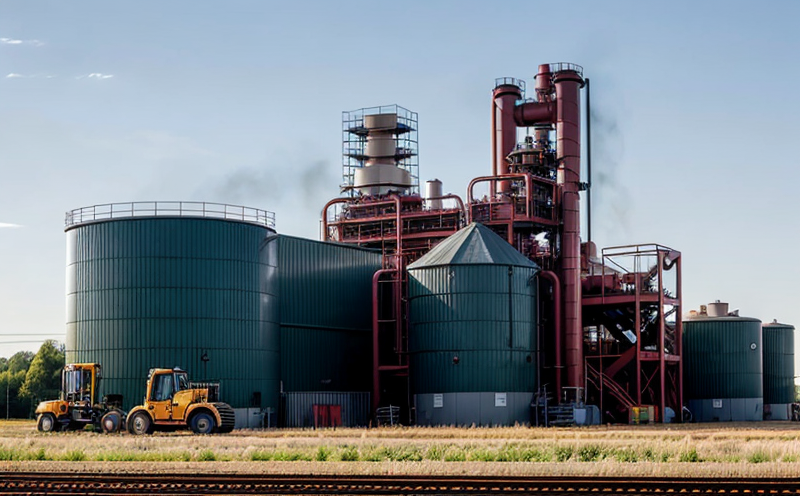ISO 3744 Milling Machine Noise Measurement
The ISO 3744 standard provides a comprehensive method for measuring noise emitted by milling machines. This service is essential for quality managers, compliance officers, and R&D engineers seeking to ensure that machinery complies with international standards and meets customer expectations in terms of noise levels.
Noise generated during the operation of milling machines can have significant implications on both worker health and industrial efficiency. High noise levels can lead to hearing damage among workers and increase operational costs due to frequent machine maintenance or early replacement. Compliance with ISO 3744 ensures that a company is adhering to best practices in manufacturing, contributing positively to its reputation and long-term sustainability.
The measurement process involves several key steps, including the preparation of the milling machine for testing, placement of noise measuring instruments, and the actual recording of noise levels. The standard specifies the appropriate distances from which measurements are taken, typically 1 meter away from the operator's side of the machine. It also provides guidance on environmental conditions that should be controlled to ensure accurate readings.
For the test to be effective, it is crucial that the milling machine being tested is representative of its intended use and that any modifications made during testing do not affect the results. This ensures that the measurements accurately reflect real-world operating conditions. After completing the measurement process, detailed reports are generated which include specific noise levels at various points around the machine.
The ISO 3744 standard also covers the calculation of weighted sound pressure levels (Leq) over specified time periods, allowing for a more comprehensive assessment of noise exposure during typical operational cycles. Compliance with this standard can help manufacturers improve their products by identifying areas where noise reduction could be achieved through design changes or operational adjustments.
By adhering to ISO 3744, companies demonstrate their commitment to occupational health and safety standards, which is increasingly important as regulations become more stringent globally. Furthermore, compliance helps protect brands from potential lawsuits related to workplace injuries caused by excessive noise levels.
In summary, implementing the ISO 3744 standard for milling machine noise measurement provides valuable insights into how well a piece of industrial equipment performs in terms of sound emission control. This information can be used not only internally but also shared with clients or potential buyers as part of broader discussions about product performance and sustainability.
Why Choose This Test
- Ensures compliance with international standards like ISO 3744
- Protects workers' hearing and improves overall workplace safety
- Promotes sustainable manufacturing practices by reducing noise pollution
- Enhances product reputation through transparent reporting of performance metrics
- Saves operational costs by identifying areas for improvement in design or operation
- Aids in meeting regulatory requirements and avoiding potential legal issues
- Facilitates better communication with clients regarding product features and benefits
- Provides detailed insights into noise characteristics that can inform future development efforts
The ISO 3744 Milling Machine Noise Measurement service stands out because it offers a robust framework for assessing noise levels, ensuring accurate data collection, and facilitating informed decision-making processes within organizations. It aligns closely with broader goals of industrial hygiene, environmental protection, and customer satisfaction.
International Acceptance and Recognition
The ISO 3744 standard has gained widespread acceptance in numerous countries around the world due to its rigorous methodology and emphasis on practical applicability. Many industries rely on this standard for measuring noise emissions from various types of machinery, including but not limited to milling machines.
By adopting these internationally recognized practices, organizations demonstrate their commitment to maintaining high standards of occupational health and safety while also contributing positively towards reducing environmental impact. This recognition enhances a company's image as an industry leader committed to innovation and excellence.
Competitive Advantage and Market Impact
- Compliance with ISO 3744 can differentiate your products in competitive markets where customers prioritize sustainable practices and worker safety.
- This service helps reduce operational costs by identifying opportunities for noise reduction, ultimately leading to lower maintenance expenses and increased productivity.
- It enhances brand reputation through transparent reporting of performance metrics, making it easier to communicate product features and benefits effectively.
- The ability to identify and address noise issues early on can prevent costly recalls or redesigns later down the line.
- By adhering to international standards, you position your company as a leader in industrial hygiene, which is becoming increasingly important for maintaining good standing with regulatory bodies and stakeholders alike.
In conclusion, implementing ISO 3744 Milling Machine Noise Measurement not only supports compliance but also provides substantial benefits that contribute directly to competitive advantage and market impact. These advantages extend beyond mere certification; they represent a commitment to continuous improvement and excellence in every aspect of industrial operations.





